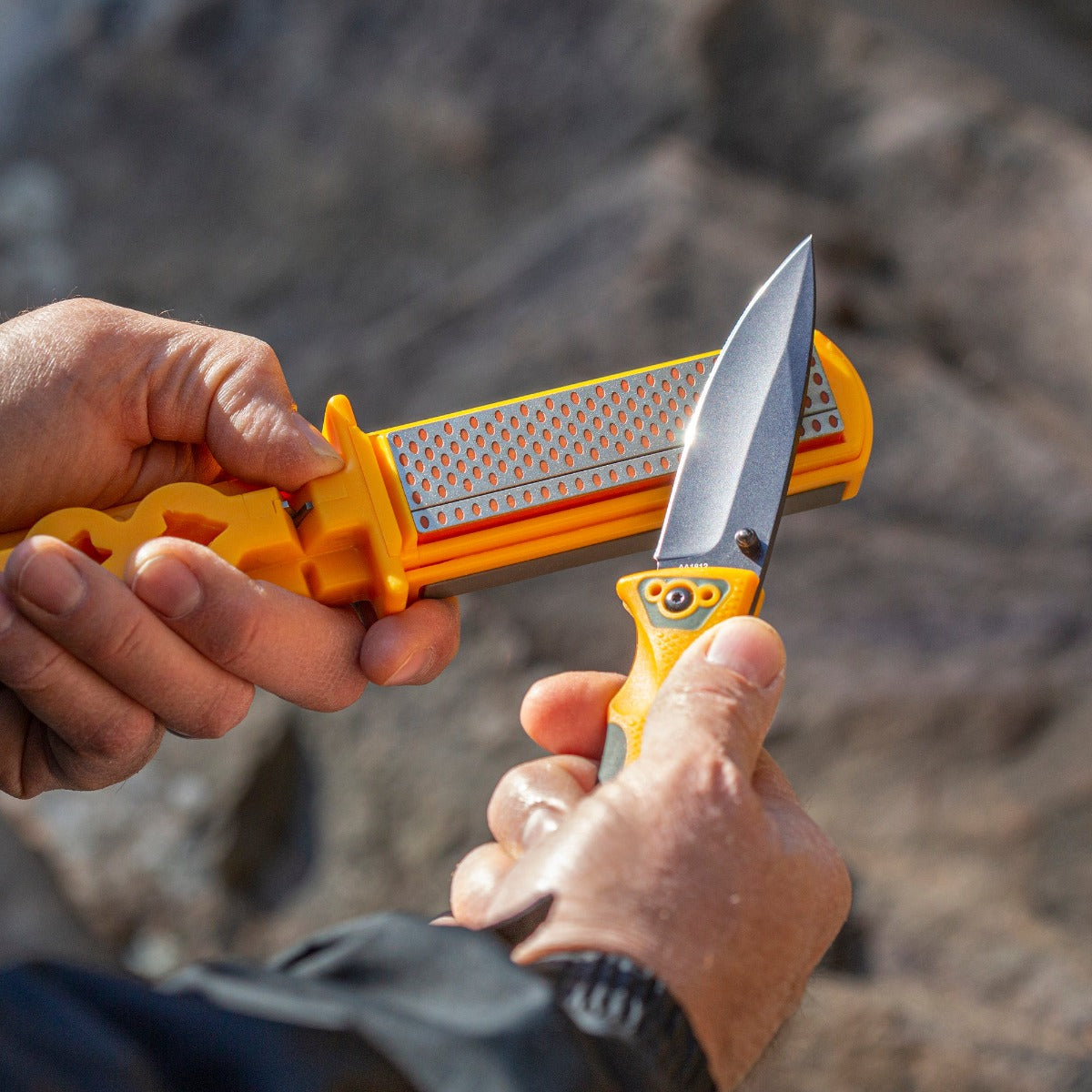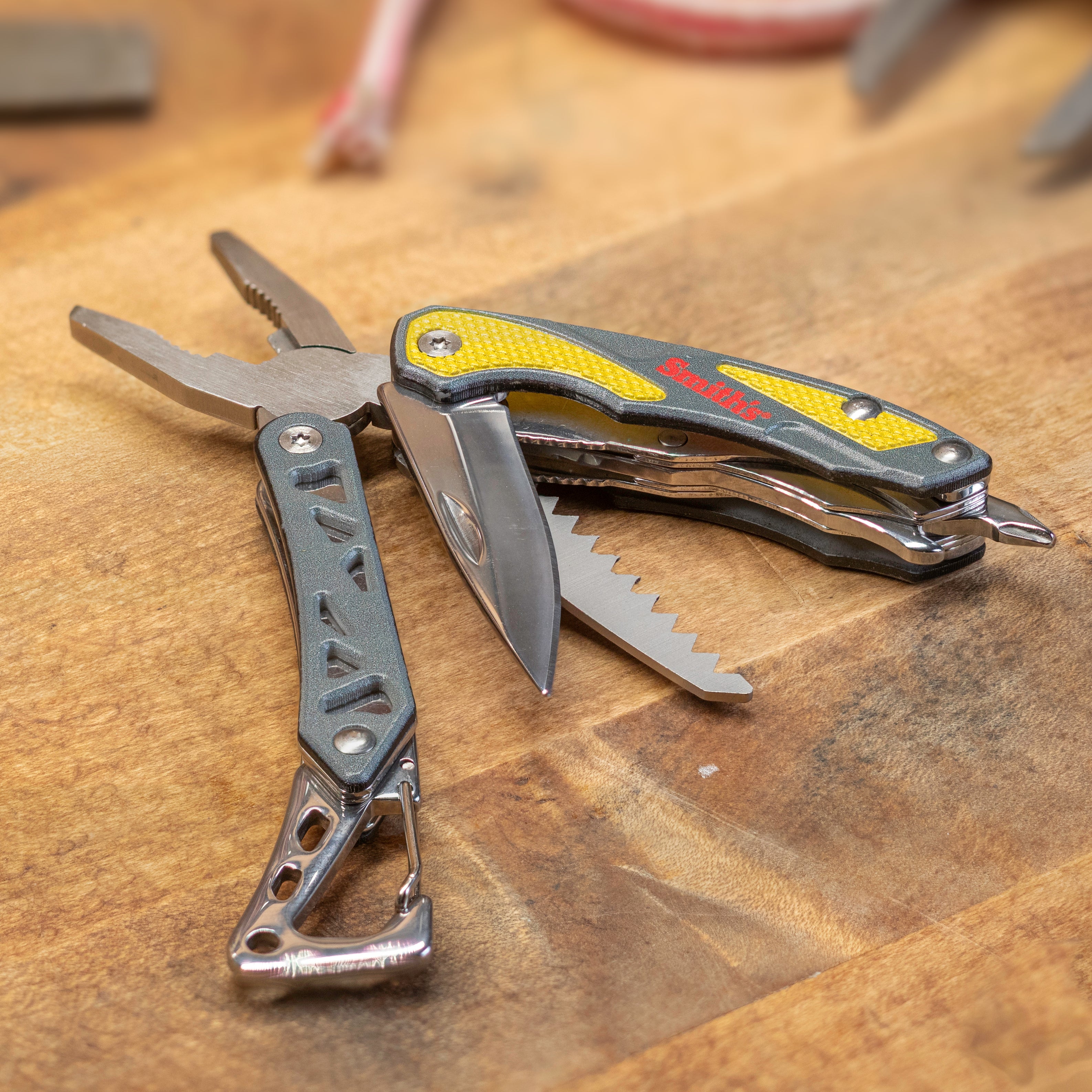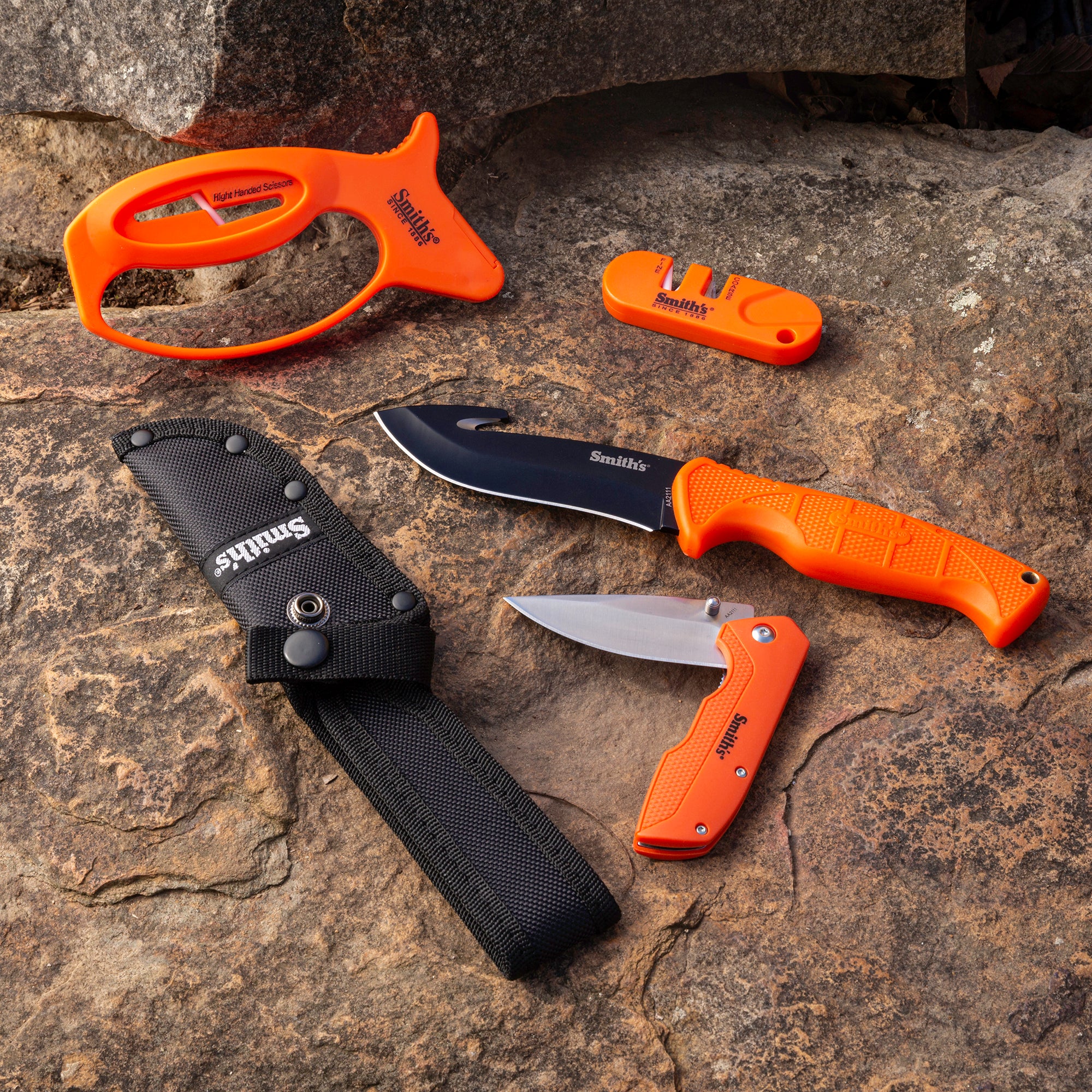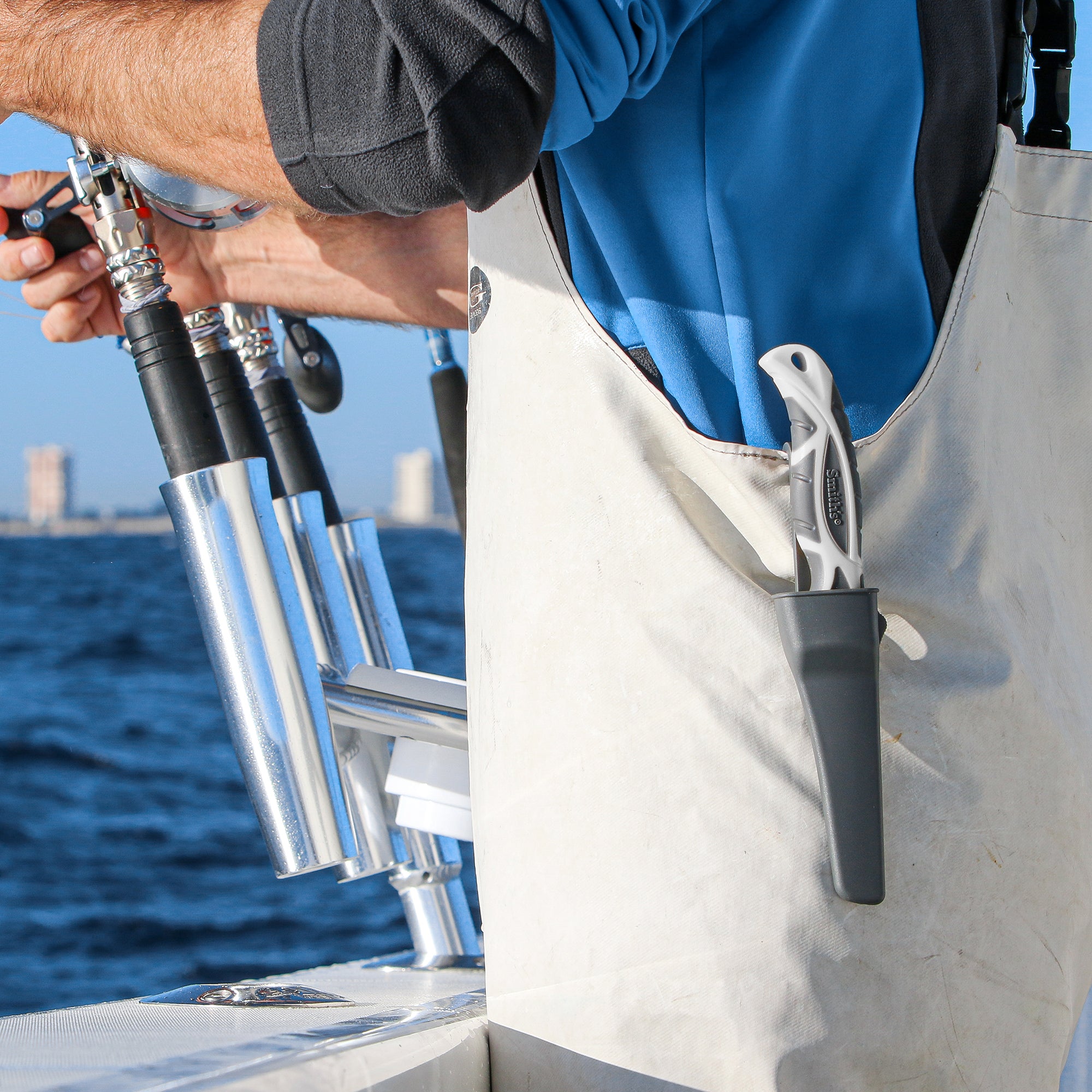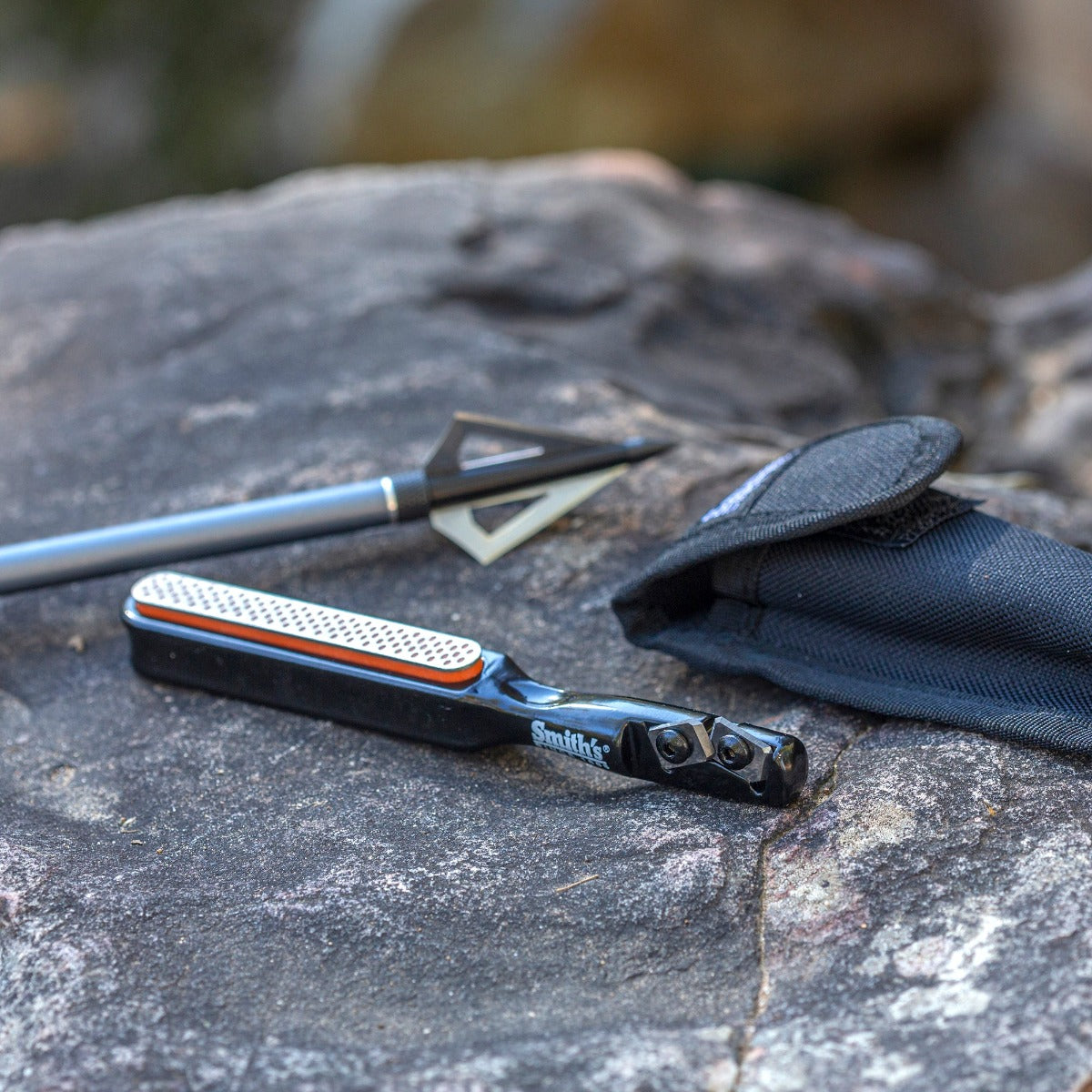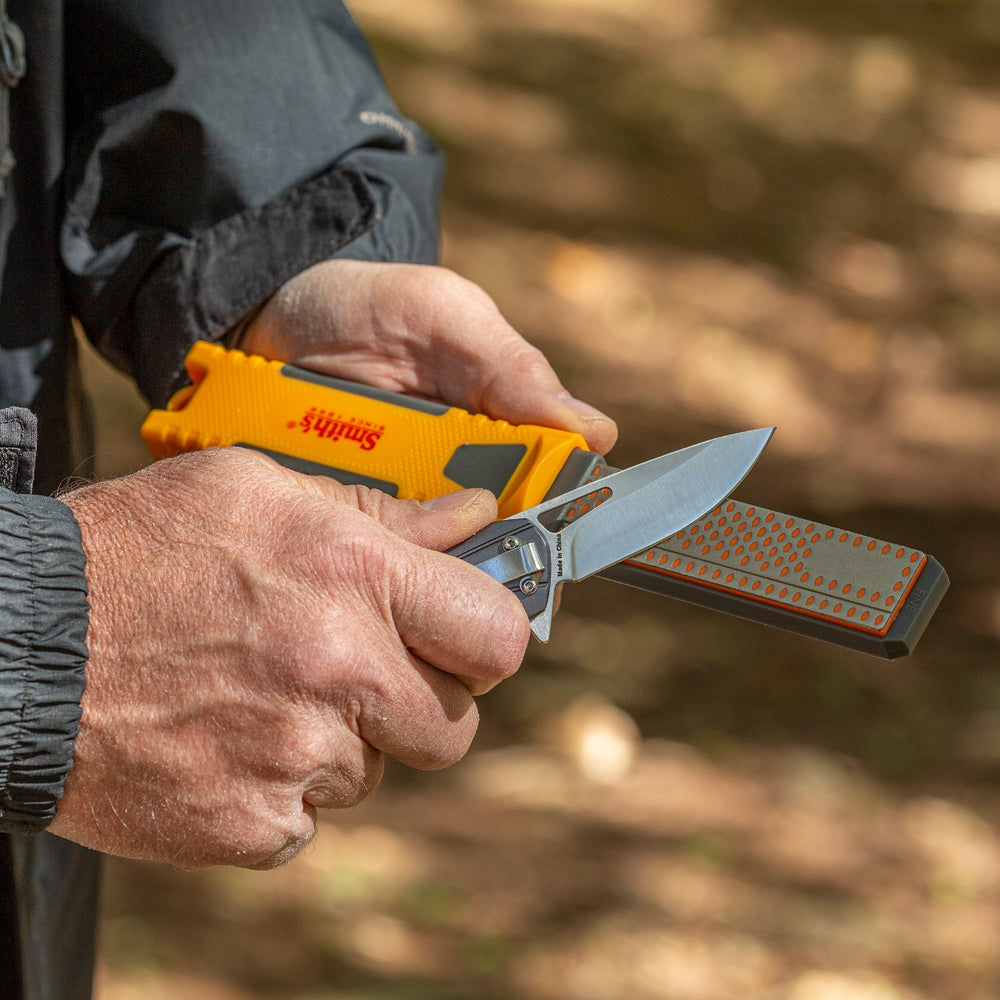HOW TO SHARPEN A FILLET KNIFE
Every fisherman knows that a sharp fillet knife is necessary to honor your catch. Not only does it allow for precise cuts, ensuring fillets are perfectly portioned, but it can also be the difference between a delicious meal and a wasted catch. A dull knife is not just irritating but also dangerous – requiring more force to cut, which could lead to slips and potential injuries.
Therefore, rather than merely replacing your fillet knife when it gets dull, or leaving it to a professional, it might be beneficial to learn how to sharpen it yourself. It's not only more cost-effective, but it also allows you to take control of maintaining your tool.
The Short Answer: Follow these basic steps to sharpen your fillet knife…
- Test initial sharpness
- Prepare sharpening tool
- Sharpen at a 20º angle, flip blade if using a stone
- Test sharpness, repeat process if necessary
What to Use to Sharpen a Fillet Knife
With many tools available for sharpening knives, it's important to find one that suits your skills, preferences, and the character of your fillet knife. While some options may be easier or quicker to use, they might not render the best outcome.
- Bench Stones: This classic tool, often a chunk of natural or artificial stone, is used to grind and hone the edges of steel tools and implements. With the ability to determine your sharpening angle, the sharpening stone offers an accutely sharp edge that other automatic methods may lack.
- Pull-Through Sharpeners: These gadgets provide a relatively foolproof method of sharpening a knife. However, long-term use could result in a warped blade. While they're quick, they typically don't deliver quite the same razor-sharp edge you'd get from a sharpening stone.
- Electric Knife Sharpeners: While electric sharpeners offer easy and fast sharpening, similar to pull-through sharpeners, they can potentially damage your knife over time through excessive grinding or incorrect angles.
- Ceramic Sharpening Rods: Although these are usually used for maintaining an already sharp edge, they're not necessarily the best for re-sharpening a truly dull blade.
For the best possible edge, we recommend hand sharpening with a classic bench stone. The control it offers, plus the incredibly sharp and long-lasting edge it provides, makes it an invaluable tool in maintaining your blades. However, each of these tools can be highly effective when used correctly – it mainly depends on your personal preference and how much time you're willing to invest in the process.
Special Considerations for Different Blade Styles
When sharpening different blade styles, it's essential to consider their specific characteristics. For electric knife blades, particularly serrated ones, it's best to use a specialized sharpener designed for serrated edges, or replace the blades when they become dull. If you need to sharpen serrated blades manually, focus on each serration individually with a small sharpening rod to maintain the blade's original shape and sharpness. Stainless steel blades, while resistant to rust, can also be harder to sharpen, so maintaining a consistent angle and using a finer grit whetstone for the final polish is crucial, with regular honing between sharpening sessions recommended. For extremely flexible blades, apply gentle and even pressure to avoid bending or distorting the blade, and frequently check the sharpness to prevent over-sharpening or damage.
Step-by-Step Guide to Sharpening a Fillet Knife
Before you start, remember that safety should always be your primary concern when handling sharp knives. Therefore, ensure that your workspace is clean and secure, and consider wearing work gloves to protect from nicks and cuts.
Step 1: Test Your Knife's Sharpness
A simple test for sharpness is gently running your thumb across the knife blade. If it catches, it's sharp. If it slides easily, your knife might need sharpening.
Step 2: Preparing the Sharpening Stone
We recommend prepping your stone with Smith’s honing solution. This will help to reduce friction and prevent the knife edge from overheating, which can ruin the temper of the blade.
Step 3: Start Sharpening
Hold the knife at a 20-degree angle to the sharpening stone. Starting from the knife's heel, slide it across the stone's length in a sweeping motion, ensuring equal pressure is maintained throughout the movement.
Step 4: Check for the “Burr”
A burr is a thin strip of metal on the cutting edge that results from continuous grinding. It feels rough, like a serrated knife. Flip the knife to the other side and repeat the process until you feel a burr on that side.
Step 5: Finishing the Process
Once you've achieved a burr on both sides, it's time to fine-tune the edge. Using the finer side of the whetstone, repeat the above steps to further refine the knife blade. This process polishes and smoothes the new edge, bringing your fillet knife to optimal sharpness.
Step 6: Testing the Sharpness
Try cutting a piece of paper or perform the thumb test again to check the sharpness of your knife. If it's not as sharp as desired, simply repeat the above steps.
How Smith's Can Help
As you can see, sharpening a fillet knife isn't an overly complicated or daunting task – it's actually quite simple, practical, and efficient when you have the right tools, like a whetstone, and the right guide to follow. By sharpening your fillet knife, you can extend the lifespan of your blade, saving both money and resources in the long run.
And remember, while the right processes are essential, the results are only as good as the tools used. That's where Smith's comes in. We not only provide top-quality fillet knives but also a variety of sharpeners to meet all your needs. From whetstones to pocket knife sharpeners, our wide range ensures that you don't only get a sharp knife but also maintain that edge for longer.
If you've found this guide helpful and want to explore our range of products, visit our fishing collection page to find the right tools for your needs!


